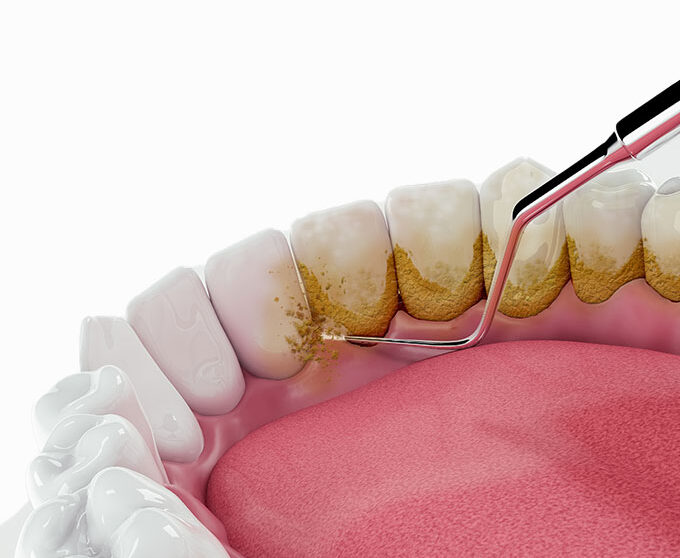Tartar is not just a cosmetic problem. It can cause bad breath, gum inflammation, and even lead to tooth loss. Although tartar forms gradually and its occurrence can go unnoticed, the consequences can be extremely serious. In this article, we have gathered seven facts about tartar that will help you better understand why it is essential to pay attention to oral hygiene and visit the dentist on time.
1. Tartar is hardened plaque
Many people don't realize that tartar is a hard plaque that was not removed in time. Plaque is a soft, sticky layer of bacteria that forms on your teeth within a few hours after eating. If it is not removed daily with a toothbrush and floss, it will accumulate and harden into tartar within 24 to 72 hours. At this point, it can no longer be removed by regular cleaning.
2. It can occur not only on the surface of the teeth
Many people think that tartar only forms on the visible surfaces of the teeth. In fact, it can also accumulate below the gum line, where it is particularly dangerous. Subgingival tartar is invisible to the eye, but can cause gum inflammation (gingivitis) and, in advanced cases, periodontitis, a disease that destroys the tissues that support the teeth. This can lead to loosening and loss of even healthy teeth.
3. Tartar contributes to bad breath
If you notice that you have bad breath, even if you brush your teeth regularly, tartar may be a possible cause. The bacteria in the hardened plaque actively multiply and release sulfur-containing compounds that give your breath an unpleasant odor. A timely professional dental cleaning at the dentist will help eliminate this problem.
4. Even people with good oral hygiene can develop tartar
Tartar can form even with daily brushing and flossing. This depends on many factors: the composition of saliva, diet, hormone levels, and even heredity. People whose saliva contains a lot of calcium and phosphates tend to develop tartar more quickly. Therefore, even if you take good care of your teeth, you should undergo a professional teeth cleaning at least twice a year.
5. Home remedies don't remove tartar
There are several "lifehacks" on the Internet to remove tartar at home using baking soda, lemon juice, or hydrogen peroxide. But be careful: such methods can damage tooth enamel and irritate the gums without solving the problem itself. Tartar can only be removed with professional instruments by a dentist or dental hygienist.
6. The presence of tartar increases the risk of cavities and inflammation
The porous structure of tartar helps retain bacteria and food debris. This creates a favorable environment for the spread of pathogenic microflora, which increases the risk of developing caries and inflammatory gum disease. In addition, when tartar covers the tooth surface, it can hide existing damage, delay treatment, and aggravate the problem.
7. Removing tartar is a quick and painless procedure
Many people put off visiting the dentist for fear of pain. In fact, professional teeth cleaning, including tartar removal, is a quick, safe, and painless procedure. Modern methods such as ultrasonic cleaning and air flow make it possible to effectively remove plaque and tartar, even in hard-to-reach areas, without damaging the tooth enamel. After the treatment, your teeth are noticeably cleaner, and your breath is fresher.
The bottom line
Tartar is not just an aesthetic nuisance. It poses a real threat to the health of your teeth and gums. Their prevention starts with simple daily habits: brushing your teeth regularly, flossing, and using mouthwash. But even that is not enough. Don't forget to visit your dentist at least twice a year for professional teeth cleaning and early detection of problems. Taking care of your dental hygiene is an investment in your overall well-being, your self-confidence, and your quality of life.






Comments